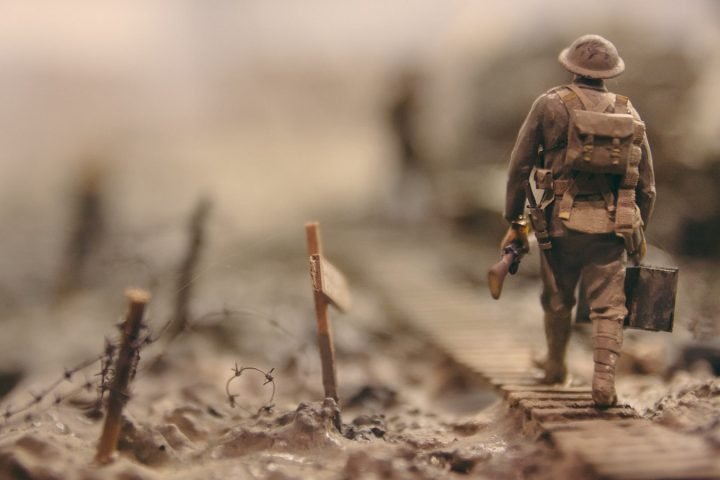What Is Miniature Photography? What Are The 7 Best Photography Tricks?
Miniature photography is only a digital art for the blend of the real and the unreal. The aim is to incorporate real-life objects, foods, or ‘entities’ into the miniature world rather than merely create a model diorama that reflects a specific situation.
It’s not necessarily a novel trend to take pictures of figures and objects as a model railway enthusiast lays his hands on his first camera. You can assure that he has pointed his lens at his favorite model rail and shot the shutter.
Today, however, photographers aspire to document more than existence. Suppose it is the surreal processing of a scene or an abstract framework.

Suggestions for Better Miniature Photography
In that case, photographers are often seeking to incorporate a glimpse of their unique characteristics into all that they shoot. Miniature photography is only a digital art for the blend of the real and the unreal.
Plan the Miniature Photographic Scenes
I’m influenced by the first stage of my small photograph. It takes me to suggestions for scenarios where I can use actual individuals in designs with miniature characters. If I’ve got the idea, I can write on my telephone and begin the arrangements required.
Then I have to decide which models the scene I have to write. There are many models across all styles, sizes, and poses out there, so you can picture one with any concept. I can conveniently order models from different online shops if there are models I do not need anymore.
Invest In A Studio Box Compact
I would then set up my cheap (but infinitely useful) Studio Box until I have effectively brought all my models and advertisements together. Many of these are available online at very affordable rates. So you would not lose for options if you choose to invest in one.
My Studio Box consists of a pipe-like structure of a cube with a highly reflective interior and a background made of flexible plastic, usually white. I also have black, grey, brown, so I use whatever suits the scene best.
Light Your Thumbnail
The next step is the lighting structure. For my job, I usually put a Speed flash on a remote trigger and stand at the Studio Box’s left-hand or right-hand corner. The Speedlight’s are out of the framework but synchronized with front lighting. The chroma key from the background increases (particularly useful when using a white background).
Use Tools for Yourself Shoot
I install the camera on a tripod until the scene makes, and I feel pleased with the lighting. I like to take shots from different angles while I am shooting. It helps me to see the photographs afterward and determine which one I like best.
Right Camera Setup
I prefer to use an incredibly limited aperture when I film, and I do use raw images, by the way. In my view, the lens and focus length usually run between f/22 and f/36. Means full focus from front to back. However, you can use a broader opening to fit your needs if you want a noticeable depth of field in your shot, as individual photographers of miniatures prefer to do.
I’ll recommend that you invest in a remote gate that eliminates wobbling and bubbling photos on your camera. For relatively tiny subjects, you might end up ruining an almost stunning picture only in the slightest blur.
First Ensure That You Keep the Shots
I still fire brackets of three shots with these static images, of -2ev, 0ev, and +2ev (two stops underexposed, level exposure, two visits overexposed). It makes my post-production even more versatile. For the final pictures, I like to compose HDR shots. It demonstrates much more depth than a single image at 0ev can, and brings the scene to life.
You get significant changes for exposure, highlights, and shadows when you film an HDR bracket. Both highlights (by reducing them) and shades by rising allow you to improve visible detail. Suppose all the shots have been taken and are ready.
In that case, I will import raw material into Adobe Lightroom and then compose the three exposures to a single frame, if I have a trio of bracket pictures, as I said above.
The next stage means that I spend a lot of time at Spot Elimination. It’s a critical point. I can’t emphasize enough. And if a scene looks flawless to the naked eye, you have to note that the camera sees everything.
No matter how patient you were and how tidy your lens and studio box were, miniature photography still contain patches of dust. Take the time to uninstall each last.
You Need To Adjust Photoshop Speeds
Next, there are improvements in the level that you would like to create for a frame. I want to wash the whole background (whether the background is white or purple), I go on an adaptive brush with +4ev; if the backdrop is purple, I go on a bush with -4ev. When I’m satisfied with the edit, the picture creates, and I use my ordinary watermark in Photoshop (for public use). The ultimate image is complete, and the field of miniature photography has been right!
Summary
The aim is to incorporate actual, real-life things, foods, or ‘entities’ into the miniature universe rather than merely creating a diorama model scale that portrays those scenes.
Essentially, real-world “entities,” which reflect something organic in the tiny environment you create, can be a subtle node. It can be essential to utilize an escalator strip or broccoli depicting plants.
However, if you are imagined, in a genuinely inexhaustible array of real-life institutions, you will see miniature ability. For me, a routine walk to the store has been a motivating experience. Here common household goods and food is either a playground for young kids or ramps and jumps for a miniature skate park. Your creativity is always the limit when taking photos.


